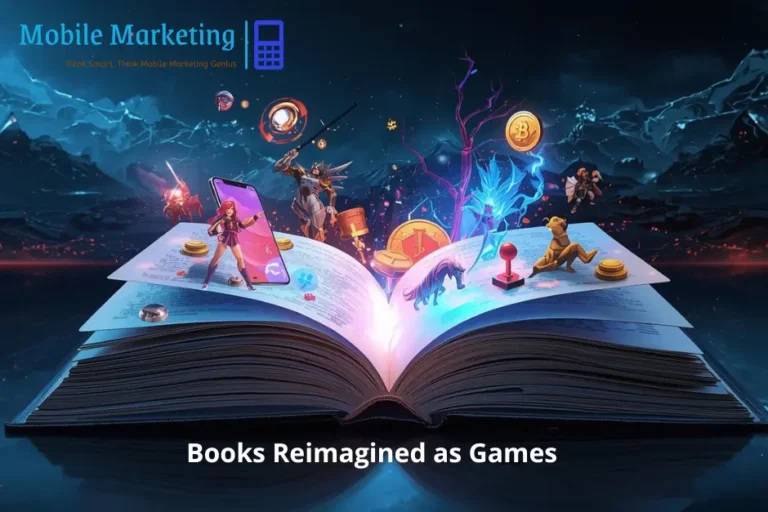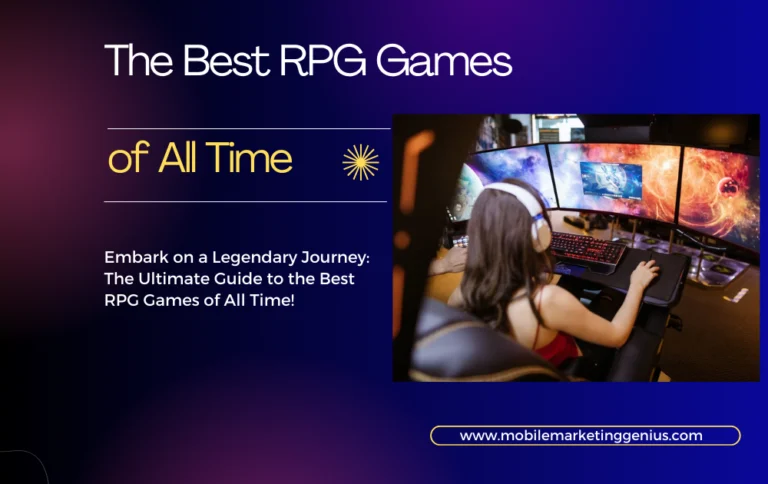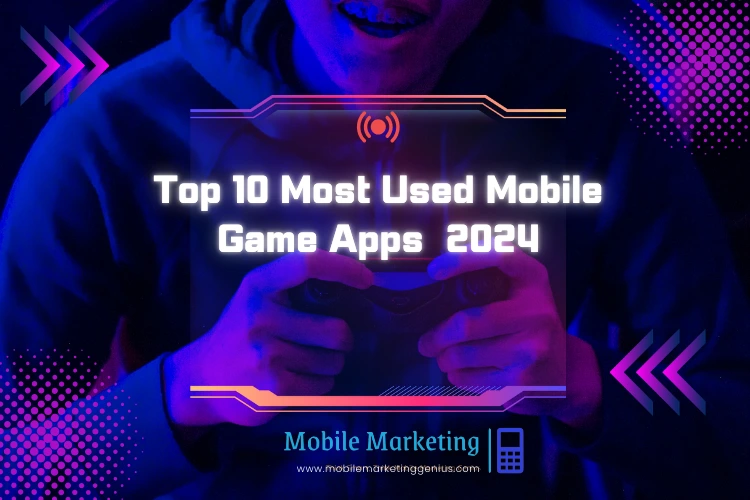Casual Mobile Games in 2025: High-Impact CPI, Hybrid Genre, and ROAS Trends Shaping Successful Marketing Strategies
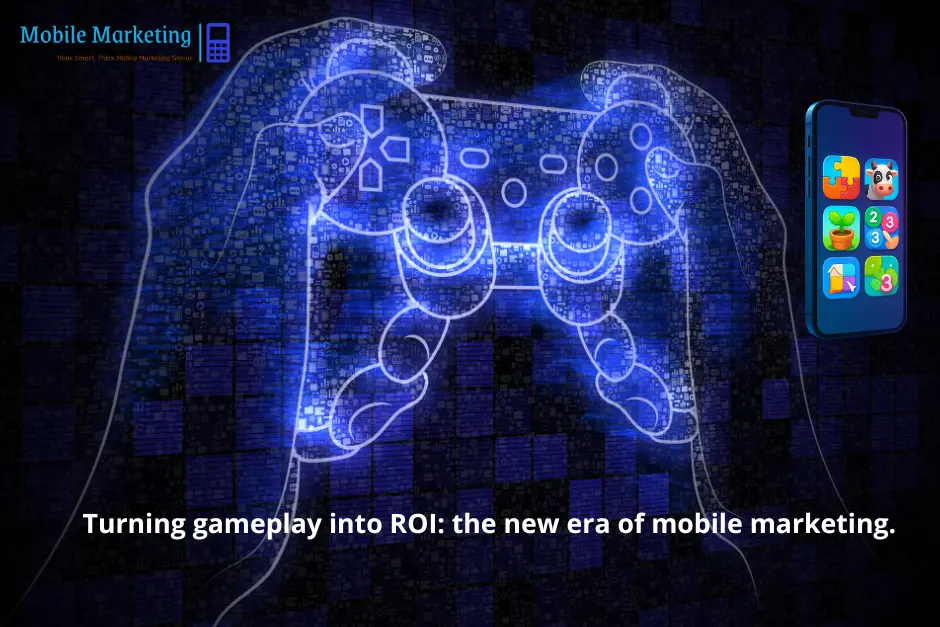
Casual Mobile games have evolved far beyond simple time-killers. Between 2023 and 2025, they have transformed into powerful digital ecosystems that influence consumer behavior, drive massive ad revenue, and shape mobile marketing trends worldwide.
In the post-pandemic phase, game developers shifted from rapid scaling and downloads to sustainable profitability models. As global mobile ad spending continued to grow—with U.S. mobile gaming ad investments expected to increase steadily by 8–10% annually after reaching $6.28 billion in 2023—marketers began to pay more attention to key metrics such as Cost Per Install (CPI) and Return on Ad Spend (ROAS).
Today, understanding casual gaming trends is no longer optional for app marketers, advertisers, and brands—it’s essential. Casual gaming is now a gateway to reaching Gen Z, Millennials, and even Gen X audiences in highly engaging environments that encourage interaction, loyalty, and in-app purchases.
In this article, we’ll explore how CPI and ROAS patterns, hybrid genres, and evolving user behaviors are reshaping mobile marketing strategies in 2025—and how brands can capitalize on these trends.
Table of Contents
2023–2025: A Turning Point for Casual Mobile Games
Between 2023 and 2025, the casual gaming market experienced a strategic transformation driven by several key forces:
✅ End of the pandemic surge – After explosive download growth from 2020–2022, user acquisition slowed and retention became a higher priority.
✅ Inflationary pressures – As inflation hit global markets in 2022–2023, user spending habits shifted, making profitability more challenging.
✅ From quantity to quality – Developers no longer focused purely on high install volumes but aimed for higher-value, engaged users.
✅ Emphasis on profitability – Revenue models began emphasizing long-term engagement over quick monetization.
✅ Shift from hyper-casual to hybrid models – Games evolved by integrating meta layers like character upgrading, events, or competitive modes.
These changes influenced how marketers approached mobile ad budgets. Rather than focusing solely on CPI, advertisers now optimize for D7 and D30 ROAS, customer lifetime value (LTV), and cross-engagement potential.
Industry data from 2023 market reports show that mobile gaming ad spend continued to rise steadily even when consumer spending showed fluctuation, reflecting strong advertiser confidence in gaming ecosystems.
The Cost Reality: CPI Trends & Platform Comparison (Android vs iOS)
One of the most significant insights entering 2025 is the widening gap in CPI between Android and iOS.
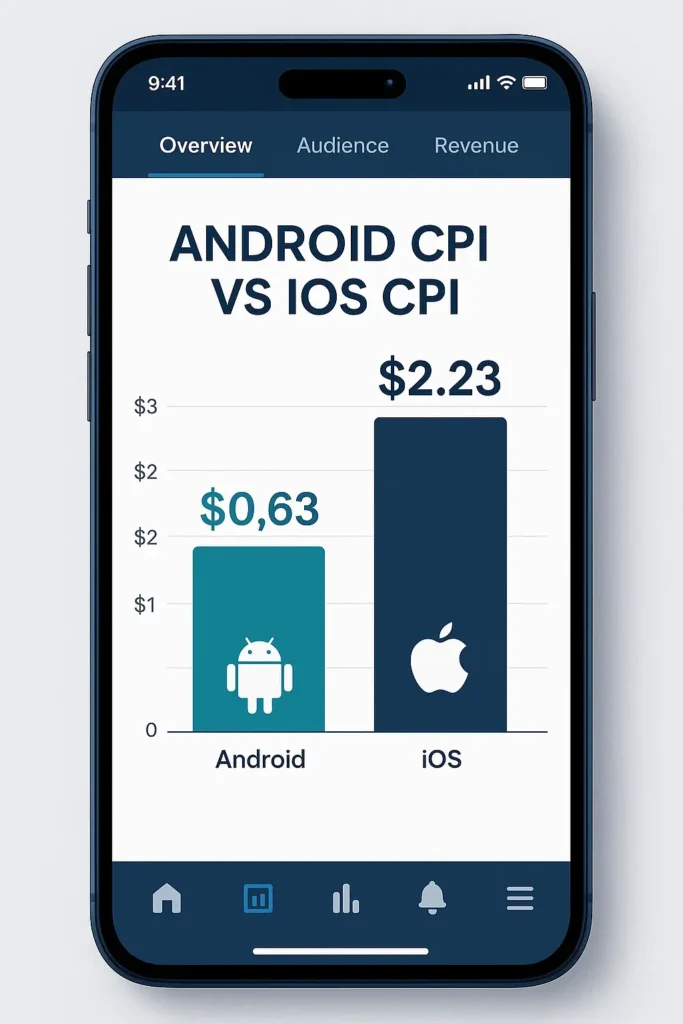
| Platform | Average CPI (2023–2024) | Marketing Implication |
|---|---|---|
| ✅ Android | ~$0.63 | Ideal for large-scale acquisition and early funnel engagement |
| 🍏 iOS | ~$2.23 | Higher-value users with stronger purchase intent |
What This Means for Marketers:
- Android remains highly cost-effective for volume-based campaigns.
- iOS users are more expensive but often deliver stronger ROAS in later stages (D7, D30).
- A dual-platform strategy can help optimize both acquisition scale and value.
Seasonality also plays a role: CPI tends to drop early in the year (e.g., February historically sees lower CPIs), spike during mid-year competition, and peak during major holidays due to aggressive ad bidding.
Pro Tip: Pair lower-cost Android installs with well-timed retargeting campaigns on iOS for better cross-platform lift.
ROAS Performance: Which Genres Deliver the Strongest Returns?
Not all casual game genres offer equal advertising benefits. Recent market trends reveal simulation and lifestyle games as top performers in terms of early-stage ROAS.
Genre vs CPI vs ROAS Comparison
| Genre | CPI Approx. | D7 ROAS Trend | Why It Works for Marketers |
|---|---|---|---|
| ✅ Simulation | ~$0.59 | ↑ Strong (8.5%) | Broad audience interest, frequent ad engagement |
| 🎯 Lifestyle | Mid-range | ↑ High (8.3%) | Appeals to daily routine users → good retention |
| 🧠 Puzzle | Slightly higher | ↗ Moderate (6.9%) | Good long-play behavior but slower monetization |
✅ Simulation and lifestyle games offer both lower acquisition cost and strong D7 ROAS, making them attractive for performance-focused campaigns.
Puzzle games still dominate casual downloads but often require hybrid mechanics or events to boost monetization.
Marketing takeaway: If you’re an advertiser looking for placements with higher engaged time and better ad stickiness, simulation/hybrid casual games deliver more consistent ROAS potential.
From Hyper-Casual to Hybrid Casual: What It Means for Marketers
For several years, hyper-casual games dominated the mobile market because of their simple mechanics, extremely low CPIs, and massive viral reach. They were ideal for rapid-scale ad monetization—but retention was a challenge, and ROAS often suffered due to short user sessions.
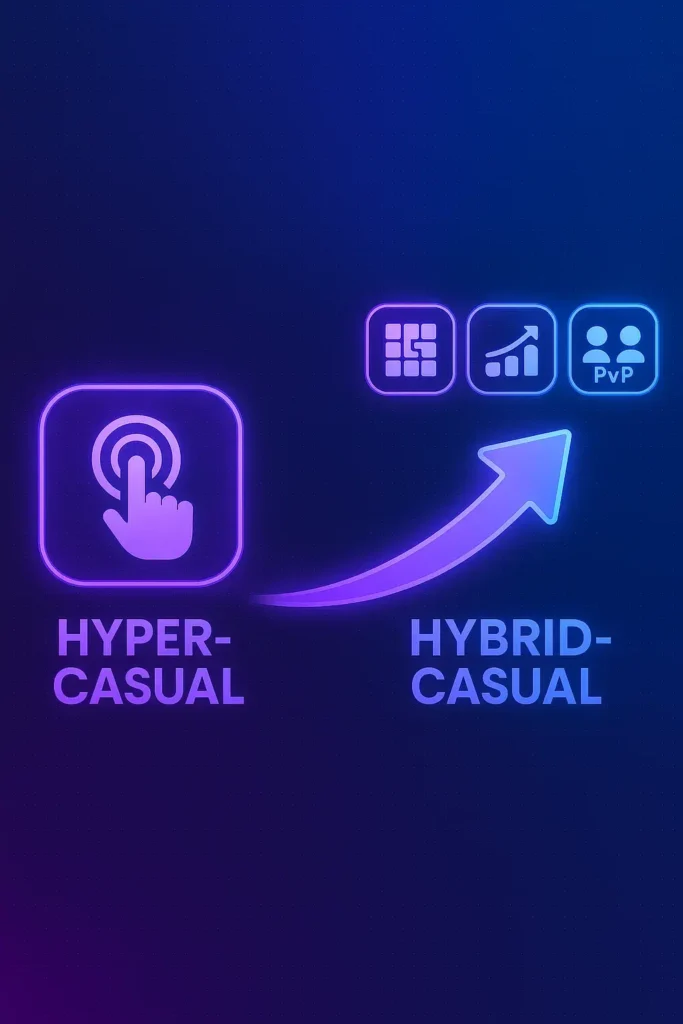
However, between 2023 and 2025, a major shift took place:
✅ Users began seeking more depth and progression.
✅ Developers layered meta-mechanics (upgrades, missions, leaderboards).
✅ Hybrid Casual became the new gold standard.
What is Hybrid Casual?
Hybrid casual games combine:
- Simple hyper-casual entry mechanics
- PLUS deeper engagement loops (PvP battles, collectible systems, crafting)
- PLUS longer-term progression and events
For example, titles like Mob Control blend accessible gameplay with PvP mechanics and card-collecting metas, increasing retention and opportunities for in-game monetization.
Why this shift matters for marketers:
| Element | Hyper-Casual | Hybrid Casual |
|---|---|---|
| CPI | Very Low | Low to Moderate |
| Session Duration | Short | Longer |
| Retention | Weak | Stronger |
| Monetization | Mostly ads | Both ads & IAP |
| ROAS | Volatile | More stable |
✅ Marketing takeaway: Ads placed in hybrid casual environments produce better long-term engagement and higher ROAS due to longer play sessions and enhanced emotional investment.
In-Game Advertising: A New Frontier for Brand Engagement
Mobile marketers have long used banner ads and interstitials—but today’s casual gaming ecosystem offers richer, more immersive ad experiences.
Top In-Game Advertising Formats in 2025
| Ad Format | Description | Best Use Case |
|---|---|---|
| 🏆 Rewarded Video Ads | Users watch an ad to gain perks (lives, currency) | High user opt-in, positive sentiment |
| 📍 Blended/Intrinsic Ads | Ads naturally appear within gameplay (e.g., billboards) | Brand awareness + immersion |
| 🎮 Playable Ads/Mini-Games | Ads that mimic game mechanics | Best for interactive brand promotions |
| 🥇 Competitive Event Sponsorships | Brand appears during challenges or tournaments | Ideal for engagement + retention |
| 🔊 Audio Ads | Non-intrusive voice ads during gameplay | Works well with gamers who play with sound on |
✅ Why this works: According to user behavior insights, casual game players often engage emotionally with challenges and rewards, making rewarded ads and event-based placements particularly effective.
✅ Success Examples:
- Starbucks x Pokémon Go merged real-world locations with game-driven engagement.
- Lay’s used blended in-game billboards in high-download casual titles to boost brand recall.
- Mastercard’s partnership with League of Legends aligned competitive gaming with payment benefits.
Winning Strategies for ROAS-Focused Mobile Marketing in 2025
With increasing CPIs and competitive ad ecosystems, marketers now prioritize Return on Ad Spend (ROAS), particularly on Day 7 (D7) and Day 30 (D30).
✅ Here are proven strategies to maximize ROAS:
✅ 1. Match ad creative to genre engagement psychology.
→ Simulation players respond well to progress and lifestyle imagery, while puzzle players enjoy strategy-focused creatives.
✅ 2. Use Android for cost-effective entry, iOS for high-value conversions.
✅ 3. Prioritize rewarded ad formats to improve emotional reciprocity and retention.
✅ 4. Retarget users who participate in tournaments/events—they are high-LTV candidates.
✅ 5. Launch playable ad creatives based on popular mechanics like merge, match-3, or tycoon loops.
✅ 6. Monitor ROAS benchmarks by genre + region to optimize bidding strategies.
What Casual Game Trends Reveal About Gen Z vs Millennials
Understanding user psychology is essential for campaign success.
Gen Z (16–25 years old)
✅ Craves instant gratification
✅ Prefers competitive events & PvP modes
✅ Engages with micro-rewards and challenges
✅ Responds well to gamified loyalty campaigns
Millennials (26–40 years old)
✅ Prefer progression-based casual games (simulation, lifestyle)
✅ Invest more time in long-term game building
✅ Respond well to ads that align with lifestyle aspirations
✅ More open to in-app purchases if tied to personal progress
✅ Marketing insight: Ads targeting Gen Z should emphasize energy, victory, and challenge. Ads targeting Millennials should focus on rewards, progression, and personal success themes.
Example: Marketing Insight Box
Insight: Players of hybrid simulation games typically engage in longer sessions and respond better to rewarded ads—making them ideal for brands seeking higher retention and ROAS over time.
Conclusion: Why Casual Gaming Is Now a Performance Marketing Engine
Casual mobile games have become more than entertainment—they are now highly optimized marketing pipelines with proven revenue models that attract massive cross-generational audiences. Between 2023 and 2025, CPI trends, ROAS gains, hybrid genres, and immersive ad formats created a new era where brands, developers, and marketers align for mutual value.
Key takeaways:
✔ CPI remains lowest on Android but iOS delivers more profitable users.
✔ Simulation and hybrid casual genres offer the strongest ROAS potential.
✔ Hyper-casual isn’t dead—but hybrid casual is the new ad performance king.
✔ In-game ad formats are evolving to reward-based, immersive, and interactive experiences.
✔ Marketing strategies must be tailored to genre psychology and player behavior.
✔ Gen Z and Millennials require different creative hooks and retention strategies.
✅ If you want to succeed in app marketing, casual games are no longer a possibility—they are a necessity.

